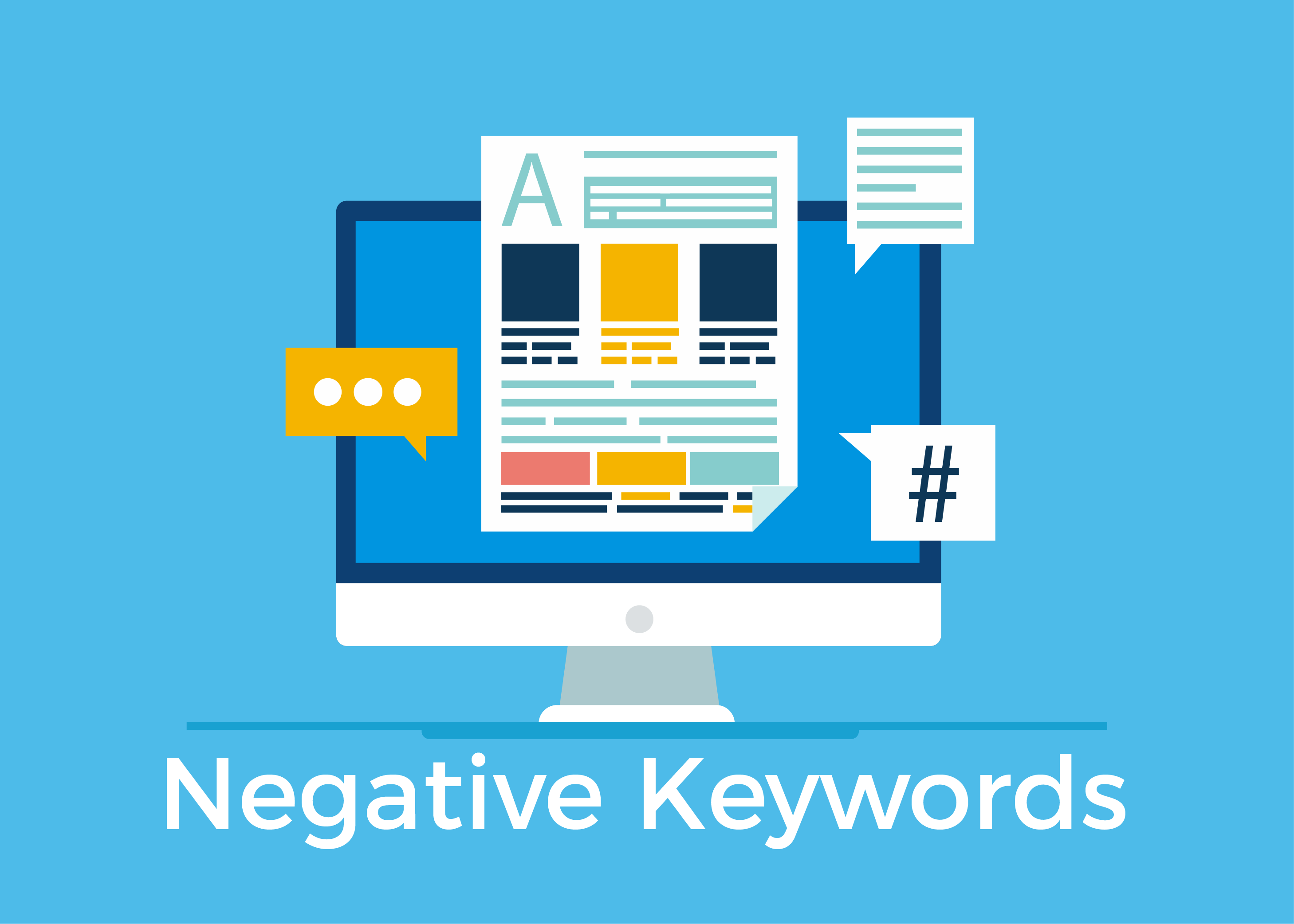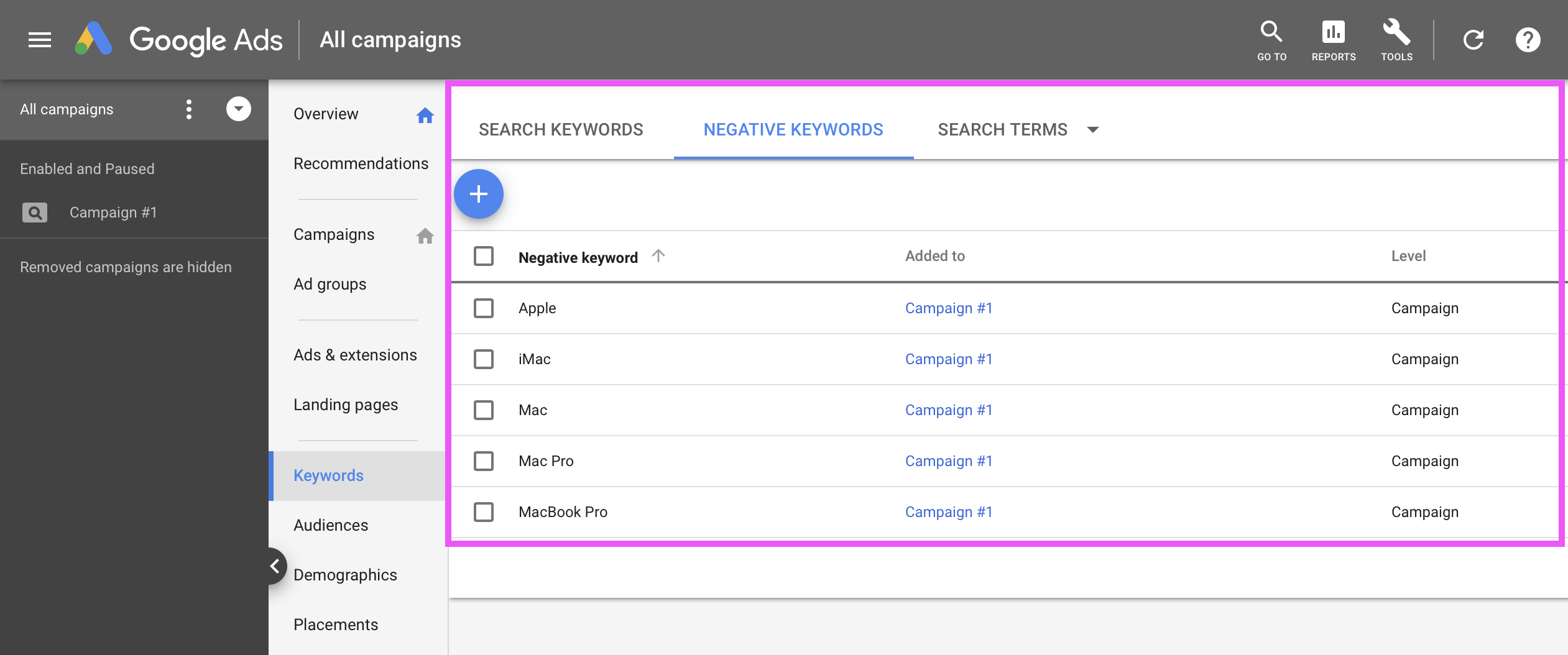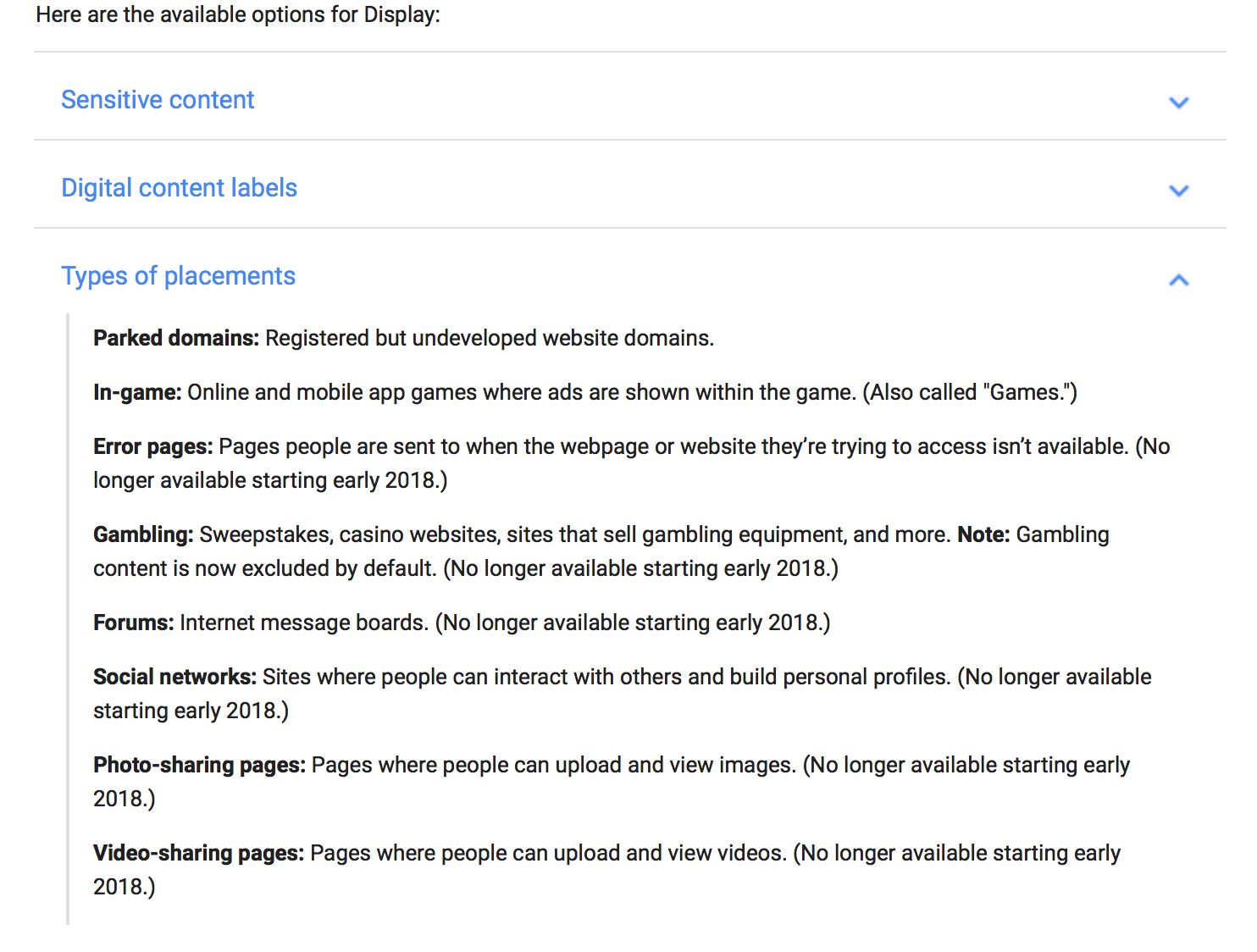Negative Keywords in Google Ads

Hi everyone, welcome back to my series on Keywords in Google Ads. In the last chapter, we talked about the different keyword types and when you might want to use them. In this chapter, I will be talking about something just as important as adding proper keywords to your campaign, which is having negative keywords. Simply put, negative keywords are terms that you do not want your ads showing up for.
For example, if you are a computer repair business, and you don’t repair Macs, putting in negative keywords for “Apple” or “Mac” will help your search ad reach the right target. By adding a word to your negative keywords list, you are telling Google not to display your ad for searches that have that keyword.
Negative Keywords in Search

The pink box shows examples of negative keywords appearing in a Google campaign.
In order to run an effective search campaign, you have to use negative keywords to screen out searches that are not relevant to your ad. If you don’t do this, you will be wasting money on irrelevant clicks that won’t help your business. Let’s say you are running an ad for the keyword “Computer Repair”. Right now, someone who searches for “Apple Computer Repair” could still see your ad, even though your company doesn’t repair Macs. That is clearly a problem, but also something that negative keywords are the perfect solution for. In the example above, I have a list of negative keywords you would consider putting. This isn’t an exhaustive list, as there are many different effective negative keywords you can run here. I’d also like to mention that negative keywords can be used as a qualifier for any type (Broad Match, etc.) of keyword besides Exact Match, because it has nothing to filter out.
Types of Negative Keywords
Just like with regular keywords, negatives have their own keyword types as well. If you are already familiar with the keyword types of regular keywords, it is actually quite easy. Negative keywords have three different types: broad match, phrase match and exact match.
Broad match negative works in that whichever keywords you put in, if any query contains all of them in any order, your ad will not show. For example if you put “apple repair” as your broad match negative and someone searched for “apple computer repair” or “where can I repair my apple computer?” your ad would not show. Be careful though, as the search term needs to contain all of the words in your broad match negative keyword in order to filter out the ad. An example is if someone searches for “fix my apple computer”, which would not be filtered out by this. Phrase match negative is similar except that the phrase has to be intact. Here your ad would only not show if “apple” and “repair” were in the exact same order as you put them in. With the previous example of “apple computer repair,” your ad would actually show this time, but “apple repair Palm Beach” would not show. Lastly, we have exact match negative, where your ad would not show only if someone typed “apple repair” in as a search.
Advanced – Display Advertising
So far, I have only discussed negative keywords in search advertising, but they can also be used in Google’s Display Network advertising. The Display Network shows the banner and sidebar ads you see on websites. This is a different beast compared to search advertising, because display ads aren’t targeting text queries that people make on Google. Instead, they target web pages that include words in the page text.
It takes a little more work to filter unwanted placements out. To accomplish this, Google uses an algorithm to try to match negative keywords to site content. If it thinks it matches the site content, it is “less” likely to show an ad on the site. This “less” is important to remember here, because no program is entirely perfect at filtering, but it is still quite accurate. All of the negative keywords you put in for the Display Network will be added as exact match, and this cannot be changed.
It is worth noting that only the first 5,000 negative keywords will be applied to display ads. That may sound like almost too many keywords, but when you are trying to cover the whole internet, it really isn’t.
In addition to the negative keywords, Google actually has another method to help refine your Display Network impressions. It is called Context Exclusion and it allows you to choose more generic blanket options to keep your ads away from places you might not want. For example, you can pick that you don’t want your ads placed on live streaming video or on a sensitive social topic. It can also help you choose certain places where you might or might not want your ad placed. These options are quite thorough, so I would advise reading Google’s help article (https://goo.gl/iyHBGe) about it before you make changes to your campaigns.


